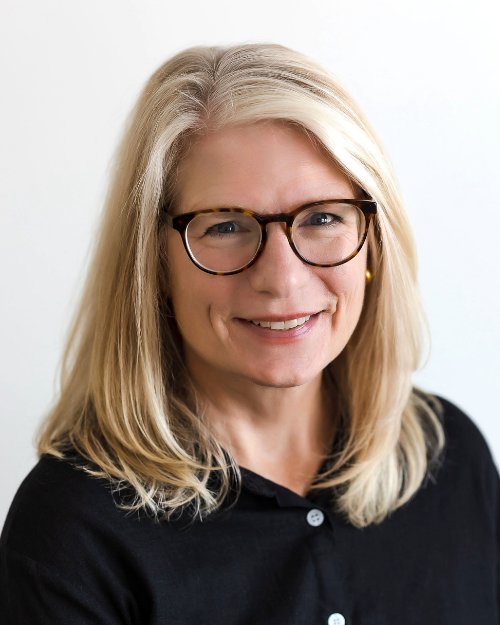Development Assessments: A Catalyst for a Culture of Philanthropy

Two Nonprofits Wonder What to Try Next
Marisol* is the executive director of a small nature center in the Midwest. Membership in her organization had climbed steadily through the pandemic, and five years later, people were still joining. Donations and revenue had increased every year, but when she adjusted for inflation, Marisol realized her fundraising efforts had plateaued. Some important new projects and programs needed to be funded, but she and her team, a naturalist, an education specialist, and a groundskeeper, never seemed to be able to get far enough ahead of operating expenses to pilot a new program or undertake renovations. She thought they should be able to raise more money, but didn’t know where to start.
Meanwhile, halfway across the country, Gary, the director of development for an orchestra in the Northeast, had a big idea to build an education wing for the concert hall with practice and performance spaces for youth and community orchestras. He had asked a few members of his board if they were interested in pursuing the idea, and they were enthusiastic. “Put the team on the job!” the chairman said, but when Gary spoke with his development staff, their message was clear. In the words of Danielle, who managed major gifts, “No way. Every time we turn around, someone around here is asking us to pull $200,000 out of a hat! We have our hands full. Building an education wing will require a campaign, and we’re spread too thin the way it is.”
When to Seek a Development Assessment
Both of these organizations are prime candidates for a development assessment. Every nonprofit’s situation is different, but there are a few major reasons why an organization would undertake one:
- Plateaued fundraising–the tactics the organization has leaned on in the past are no longer effective drivers of growth
- Limited capacity–the organization knows its staff is at capacity, but is unsure how to restructure or what additional fundraising positions to hire
- Sudden momentum–the organization has a windfall or new opportunity, but is unsure of how to capitalize on it
- A big idea–the organization has a big vision that might require a major campaign, but is uncertain about how to mount the effort
Catalyzing a Culture of Philanthropy
Senior Consultant Rob Ruchotzke explains how development assessments can yield insights into an organization’s culture of philanthropy: “CFA does a deep dive into fundraising operations. When we analyze the data and survey the tactics and materials the organization uses to meet its financial goals, we learn about the concrete measures they’re taking to raise money. Culture isn’t as concrete, and it’s hard to measure, but we learn a lot about it when we interview staff, board members, and major stakeholders. Those conversations give us a strong indication of the health of an organization’s culture of philanthropy.”
What Does a Culture of Philanthropy Look Like?
In a healthy culture of philanthropy, everyone from the board of directors to leadership to staff and volunteers understands that the organization’s mission cannot be delivered without fundraising. When the need for effective fundraising is part of everyone’s consciousness, then people are prepared to engage, which might include everything from a board member seeking support from associates to a staff member providing excellent customer service. In a strong culture of philanthropy, fundraising is integrated with the mission–the development team is understood as the branch of the organization responsible for seeking the vital partnerships that make the mission possible. Finally, the hallmark of a robust culture of philanthropy is the strong partnerships and co-creative alliances that organizations build with their most important stakeholders.
Strengths and Opportunities–The Results Are In
The development assessments of both Marisol’s nature center and Gary’s orchestra yielded a wealth of information. Data analysis and prospect research revealed that both organizations’ networks had a great deal of untapped capacity, and CFA provided each organization with multi-year development strategies to optimize fundraising efforts and realize the greatest ROI. Most important of all, both nonprofits came away with new tools and customized approaches to strengthen their respective cultures of philanthropy.
Even though Marisol’s team had no chief fundraiser, interviews revealed that the nature center had a strong culture of philanthropy. Rob pointed out that “Because the organization was so small, everyone had to wear many different hats; every member of the team worked with major stakeholders and spent hours every week on building relationships, creating partnerships, and raising funds.” One of Rob’s recommendations for the nature center was to hire a full-time director of development. Among many other things, the data analysis showed that this key position would generate much more revenue and easily pay for itself.
The orchestra’s culture of philanthropy wasn’t as strong. The organization was meeting its yearly goals and had an appropriately sized development team for routine operations. Each fundraiser on the team was doing a great job in their area, but the prevailing feedback was that the development team was siloed. Other members of the organization–musicians, conductors, and front-of-house staff–felt that their only responsibility was to provide a great musical experience for audiences; they weren’t clear on their connection to fundraising.
The orchestra’s development team was thought of as “the people who go get the money when you need something funded.” This dynamic explains Danielle’s resistance when Gary raised the idea of building an education wing. “We see this sometimes with larger organizations,” Rob added. “It’s easy in these situations for the development team to become almost isolated. Those who directly deliver the mission sometimes forget that it all depends on funding, and everyone needs to play their part.”
Ultimately, Rob recommended that the orchestra undertake a campaign to fund the education wing and hire two additional positions to increase the team’s capacity. He also advised Gary to have his team set up meetings with the other departments in the organization to reinforce how essential fundraising is to the mission and explore the many ways in which everyone can participate.
Partner with Us
A healthy culture of philanthropy is the optimal environment for raising funds. It is the foundation of the kind of connection and cooperation among staff and stakeholders that leads to great results. Do you have questions about the efficacy of your fundraising operations? Could your culture of philanthropy use a boost? A development assessment with CFA can answer these questions and put your organization on track for a greater return on your fundraising efforts. Contact CFA today.
*Disclaimer: Client confidentiality is paramount in our work with each and every organization. The stories in this article are fictionalized, an amalgamation of real situations drawn from CFA’s broad experience serving nonprofit organizations.
Leslie Cronin, Senior Manager of Strategic Communications
Leslie Cronin comes to Creative Fundraising Advisors with broad experience in education and nonprofits. Early in her career, she taught English, composition, and creative writing at selective independent schools, colleges, and universities. In 2005, she became Senior Development Writer at the Museum of Fine Arts, Houston, overseeing all aspects of communication coming out of the museum’s development department including exhibition descriptions, grant applications, correspondence with major donors, acknowledgements, and event invitations.
Leslie later brought her experience in education and fundraising to a new role, serving first as board member and then vice president of the board of an independent school in Houston, Texas. During her tenure, she was instrumental in the formulation of the school’s 20-year plan, including its successful accreditation as an International Baccalaureate institution. She worked closely with a wide variety of consultants on urban planning, architecture, and a fundraising feasibility study. Her insight into the client experience helps her every day in her work for CFA.
As Senior Manager of Strategic Communications, Leslie helps CFA’s clients shape their campaigns for maximum impact and results by leading case development workshops, writing compelling case summaries, and crafting powerfully persuasive campaign collateral. Additionally, Leslie manages CFA’s brand voice by developing content for the firm’s resource library and overseeing the editorial calendar.
Leslie believes nonprofits have the power to change the world. In crafting cases for support, she writes as a committed advocate for each client and their goals. Leslie holds two Masters degrees, one an MFA from the Iowa Writers’ Workshop, the other an MA in English Literature from Temple University. She is mother to two grown children, a voracious reader, and an amateur equestrian. She lives on Cape Cod with her husband, author Justin Cronin, and their rescue dog, Lonesome Dove.

